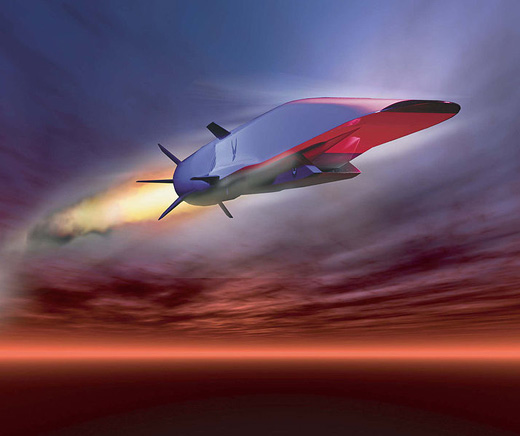Boeing X-51 Pushes The Bounds Of Hypersonic Flight
Hypersonic flight seems almost like science fiction and its development and introduction into commercial flight seems as if it could be in the far distant future … but it may be attainable sooner than most might imagine following the successful first test flight of the Boeing X-51 WaveRider reaching Mach 6 this past Wednesday.
Before I proceed in writing about the X-51, let us look at the history of manned flight from, which as of today has only existed for just under 107 years.
In the tens of thousands of years of civilization, humankind first achieved mechanical manned flight on the 17th of December 1903 when the Wright Brothers flew on a beach in Kitty Hawk, North Carolina; a short 44 years after the Wright Brothers first flight Chuck Yeager achieved super sonic flight on the 14th of October 1947 … and just a short 14 years later on the 12th of April 1961, Yuri Gagarin broke the bonds of Earth’s gravity and became the first man to fly into outer space.
The short history of aviation as we know it develops rapidly and the successful test flight of the Boeing X-51 WaveRider’s three minute hyper sonic flight earlier this week takes the future of air travel off the drawing board and into the skies.
While the Boeing X-51 only flew for a short three minutes, keep this in mind … the first Wright Brothers flight lasted a mere 12 seconds. If the Wright Brothers 12 seconds could shape the future of flight as we know it, imagine what three minutes flying at hypersonic speeds could offer the world!
The X-51 scramjet has been designed as an unmanned military flight demonstration rocket with experimental and military applications. Like many military designs, the design and successful development in the military realm will likely lead to future passenger transportation designs and applications. Jet aircraft were designed for military aircraft, computerized cockpits were designed for military aircraft and supersonic military aircraft lead to the development of the Concorde.
What is extremely impressive about the X-51 is not only its speed of Mach 6 (approximately 4,608mph), but that it flew exclusively using JP-7 aviation fuel. JP-7 fuel is the fuel commonly used by supersonic military aircraft. By using a common fuel, the X-51’s ability to perform in ‘real world’ situations is greatly enhanced by reducing development costs and increasing its development viability.
So, while the X-51 is still an experimental aircraft and is unmanned, we can still look at the future of this technology as something to possibly look forward to in commercial air travel.
If you’re wondering exactly how fast Mach 6 is in a real world scenario, imagine this … flying from New York’s JFK to Los Angeles’ LAX, 2,475 miles, in about 30 minutes.
The beauty of the aviation industry … it is OK to dream beyond the limits of the imaginable.
Below is an artist rendition of the Boeing X-51 provided by Boeing.
Happy Flying!



One Comment